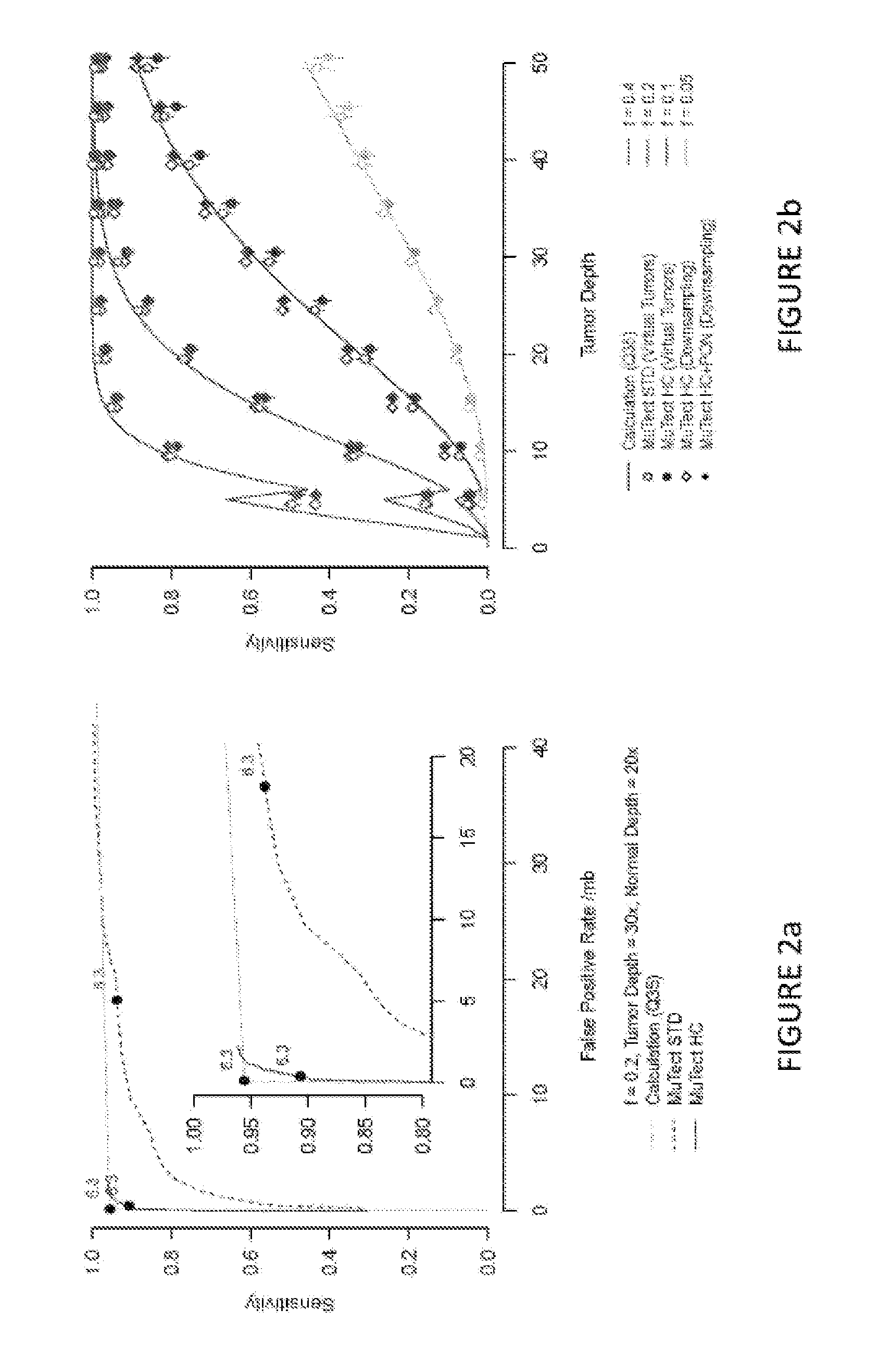Detecting variants in sequencing data and benchmarking
- Summary
- Abstract
- Description
- Claims
- Application Information
AI Technical Summary
Benefits of technology
Problems solved by technology
Method used
Image
Examples
Example
[0038]The present subject matter is directed to the detection of variants, which include, for example, alterations, allelic variants, mutations and polymorphisms. The sequencing data may include, for example, DNA, RNA, cDNA, and / or other genetic sequencing data. Although systems, methods and computer program products for detection of somatic mutations in DNA sequencing data will be discussed in detail below, these are being provided as exemplary embodiments and one skilled in the art would recognize that the present subject matter can also be used for detection of other variants from other sequencing data.
[0039]Although many mutation detection methods have been developed, there are few systematic approaches for benchmarking their performance on real sequencing data. Previous publications described simulation methods ranging from fully synthetic models to ones that better capture real sequencing errors. However, none of those methods model the fully diversity of non-random sequencing...
PUM
 Login to View More
Login to View More Abstract
Description
Claims
Application Information
 Login to View More
Login to View More - R&D
- Intellectual Property
- Life Sciences
- Materials
- Tech Scout
- Unparalleled Data Quality
- Higher Quality Content
- 60% Fewer Hallucinations
Browse by: Latest US Patents, China's latest patents, Technical Efficacy Thesaurus, Application Domain, Technology Topic, Popular Technical Reports.
© 2025 PatSnap. All rights reserved.Legal|Privacy policy|Modern Slavery Act Transparency Statement|Sitemap|About US| Contact US: help@patsnap.com



